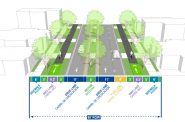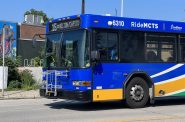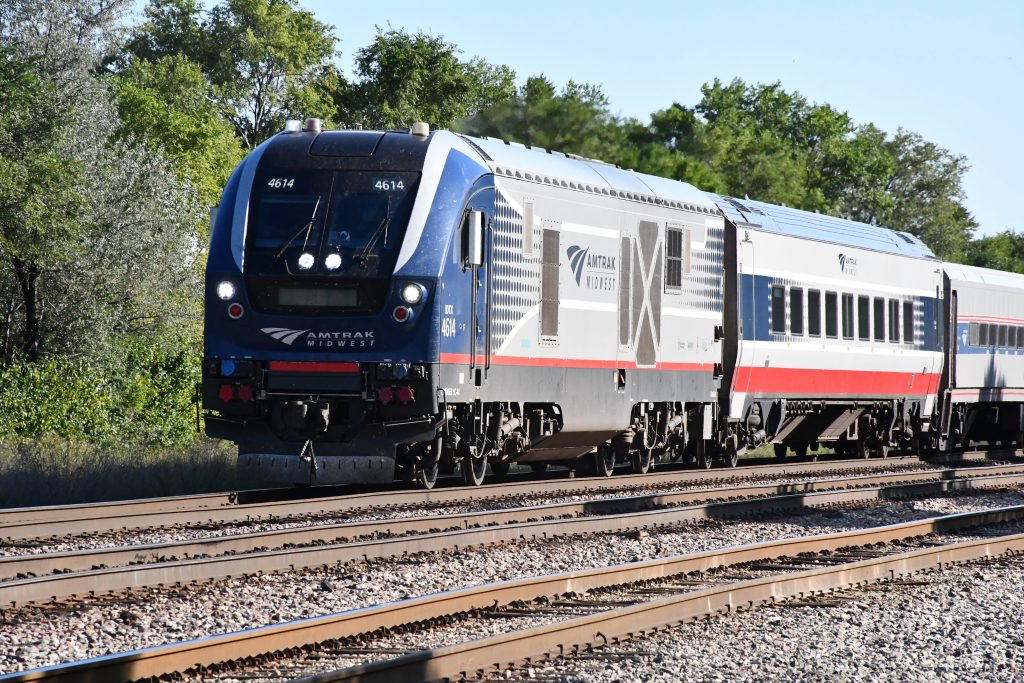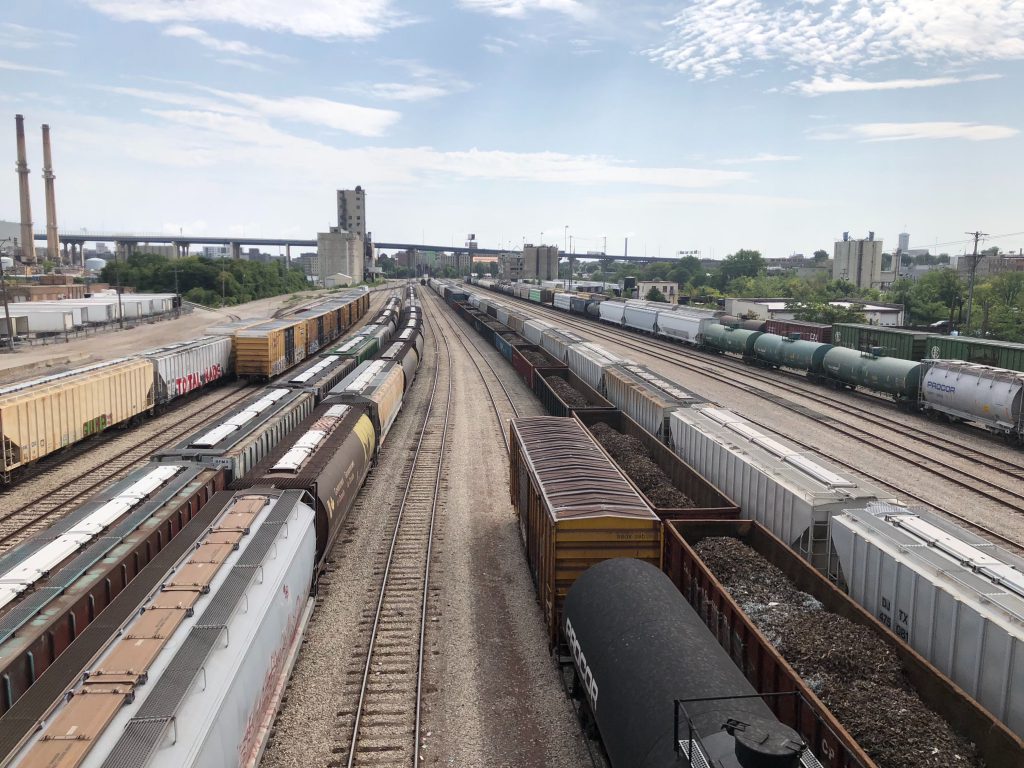$73 Million Federal Grant Will Help Expand Amtrak Hiawatha in 2026
Plus: Borealis ridership outperforming expectations.
An eighth daily roundtrip train trip between Milwaukee and Chicago could soon be a reality. The news comes as traffic on an extension to the Twin Cities is already exceeding expectations.
Senator Tammy Baldwin announced Monday morning that a $72.8 million federal grant was awarded that will fund a critical freight bypass near the Milwaukee Intermodal Station. It’s a lynchpin to increasing the frequency of the Amtrak Hiawatha Service passenger train between Milwaukee and Chicago.
Building the alternative route, known as the Muskego Yard Bypass, has long been identified as a critical infrastructure component to expand the amount of passenger rail service in Milwaukee.
“Wisconsin families and businesses deserve modern, reliable, and safe transportation – and that includes rail,” said Baldwin in a statement. “I’m proud to deliver for Wisconsin, helping more folks conveniently travel by train, keeping costs down for businesses and consumers, and ensuring our Made in Wisconsin economy can keep moving forward.”
The funding will pay to construct a two-track mainline through the Muskego Yard, the large railyard in the Menomonee Valley. Currently, many freight trains avoid the yard and run through the Milwaukee Intermodal Station to avoid various height, speed and operational constraints in the Canadian Pacific Kansas City (CPKC) railyard. But in doing so, the freight trains reduce capacity at the state’s premier passenger train facility.
“In many ways, the future of rail in Wisconsin hinges on a successful Muskego Yard bypass project,” said Wisconsin Department of Transportation (WisDOT) Secretary Kristina Boardman. “We’re thrilled to receive this pivotal funding that will significantly reshape our rail infrastructure plans in the coming years. Thanks to this federal investment, we’ll be able to further support freight and passenger rail services throughout Wisconsin and consider expansion of services in additional corridors.”
Wisconsin, in 2020, won a $26.6 million grant for what was to be a $55 million bypass project. But rising costs, attributed to inflation and bridge replacement needs, caused the state to pursue a second grant, said Lisa Stern, WisDOT chief of railroads and harbors, in March 2023.
“The infrastructure is really meant for future [CPKC] growth,” Stern told a Common Council committee.
But she said CPKC had agreed to a key provision: once the state secured the funding, it could advance an eighth-daily roundtrip on the Amtrak Hiawatha Service.
WisDOT, with federal support, is already building a second platform at the Milwaukee Airport Rail Station to increase operational flexibility for both freight and passenger trains.
On Monday, Stern told Urban Milwaukee that the airport project is scheduled to be completed in 2026. The state also anticipates taking possession in 2026 of new cars it purchased that are necessary to operate more service.
The completion of the airport station project, new equipment and Muskego Yard funding are all required to increase Hiawatha’s frequency, said Stern.
Diverting trains away from the downtown train station also benefits non-riders. Sending trains through the freight yard will reduce the number of trains and length of time they take to pass through grade crossings at N. Plankinton Avenue, N. 13th Street and W. Greves Street.
A previous plan to increase the daily roundtrip total from seven to 10 was scuttled by Illinois officials in 2019 after state officials nixed a planned siding in Glenview, Illinois which would have allowed freight trains to wait for faster passenger trains to pass.
For the Muskego Yard bypass, bridges over the Menomonee River and Burnham Canal at each end of the yard, first built for the now-defunct Milwaukee Road, would be replaced while three bridges over a number of Walker’s Point streets (1st, 2nd and Florida) would be rehabilitated. A small bridge over an alley between S. 2nd St. and S. 3rd St., near The Yards apartment building, would be removed.
The project also includes installing a centralized traffic control, CTC, system to allow signals to automatically change and improve safety.
According to a WisDOT project website, preliminary engineering was completed in June 2023, and the final design is to be completed in 2025.
Through a web of federal regulations, host railroads can demand infrastructure improvements that primarily benefit their operations in exchange for allowing expanded passenger rail service. The CPKC mainline between downtown Milwaukee and the Illinois border is among Wisconsin’s most heavily used rail corridors.
The grant is from the U.S. Department of Transportation’s Consolidated Rail Infrastructure and Safety Improvements, CRISI, program.
Borealis Crushing Expectations
Increasing the frequency of trains between Milwaukee and Chicago could help with another popular train line: the Amtrak Borealis.
The new line, which launched in May, between Chicago, Milwaukee and St. Paul saw its 100,000 ride last week.
“Reaching 100,000 passengers in less than six months is a testament to the good things that can happen when we provide a service that is needed,” said Minnesota Transportation Commissioner Nancy Daubenberger. “We are very excited to reach this milestone and look forward to strengthening our partnerships with communities, as well as federal, state and local governments, and Amtrak to continue providing a safe, reliable, and sustainable transportation option.”
An engineering plan associated with the project previously estimated that 124,000 trips would be taken on the line in the first year.
In July, U.S. Department of Transportation Secretary Pete Buttigieg visited the airport train station construction project and rode a Hiawatha train with Governor Tony Evers to the Intermodal Station.
The Borealis line was created by merging elements of two existing routes: the Hiawatha and the Empire Builder.
Between Chicago and Milwaukee, the Borealis replaced an existing Hiawatha run so that no additional track capacity was needed upfront. But west of Milwaukee, the line adds a second daily roundtrip through the corridor.
The Empire Builder provides service between Chicago and either Seattle or Portland, but east-bound trains are frequently delayed before arriving in St. Paul and the once-a-day departures limit the desirability of the service.
Minnesota officials are already openly discussing extending the train westward and increasing capacity, while Wisconsin won $2.5 million in federal grants last December to study five passenger rail expansion routes in the state.
A $31.8 million federal grant is funding the capital costs necessary from the host railroads to enable the $53 million project. The improvements are expected to generate $34.7 million in freight cost savings over the next 30 years, according to earlier statements by Wisconsin and Minnesota’s transportation agencies.
If you think stories like this are important, become a member of Urban Milwaukee and help support real, independent journalism. Plus you get some cool added benefits.
More about the TCMC train
- Grant Will Fund 6 Years of Milwaukee to Twin Cities Train - Jeramey Jannene - Jan 11th, 2025
- $73 Million Federal Grant Will Help Expand Amtrak Hiawatha in 2026 - Jeramey Jannene - Oct 28th, 2024
- Pete Buttigieg Tours Port With Mayor, Rides Train With Governor - Jeramey Jannene - Jul 31st, 2024
- New Twin Cities-Milwaukee-Chicago Train Starts May 21 - Jeramey Jannene - May 1st, 2024
- Wisconsin Planning Passenger Trains To Green Bay, Madison - Jeramey Jannene - May 26th, 2023
- Chicago, Milwaukee, Twin Cities Train Could Start in Late 2023 - Gaby Vinick - Feb 24th, 2023
- Transportation: TCMC Train Poised for 2024 Start - Jeramey Jannene - Mar 10th, 2022
- Twin Cities-Milwaukee-Chicago rail gets $31.8 million federal boost - Wisconsin Department of Transportation - Mar 9th, 2022
- Transportation: Biden Infrastructure Plan Adds Amtrak Service To Madison, Green Bay - Jeramey Jannene - Apr 1st, 2021
- Committee to hear file in support of TCMC Railway service expansion - Ald. Bob Bauman - Mar 30th, 2021
Read more about TCMC train here
Transportation
-
Wisconsin’s First Federally-Funded Fast EV Chargers Are Online
 Jan 9th, 2025 by Joe Schulz
Jan 9th, 2025 by Joe Schulz
-
Milwaukee Wins Grant To Rebuild National Avenue
 Jan 9th, 2025 by Jeramey Jannene
Jan 9th, 2025 by Jeramey Jannene
-
MCTS Eyes PurpleLine Upgrades After Connect 2 Demise
 Jan 6th, 2025 by Graham Kilmer
Jan 6th, 2025 by Graham Kilmer























I wonder how $73 million compares to inflation adjusted original Milwaukee Road costs to build six miles of track and two bridges.